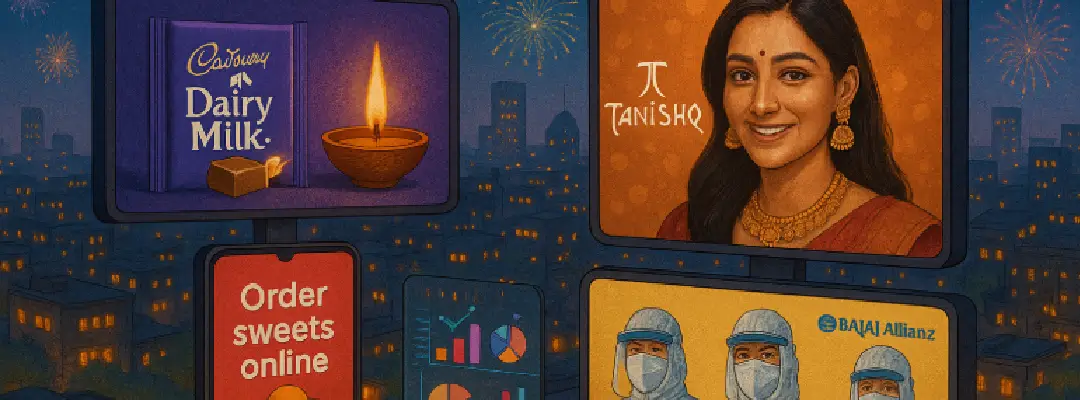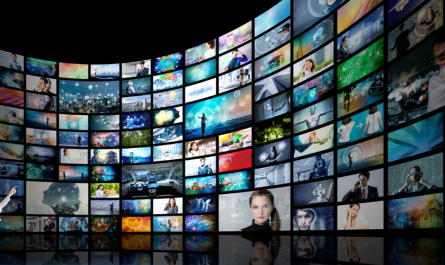Lighting Up the Festive Market: What Worked in Diwali Campaigns (2020–2025)
Every Diwali, brands rush to light up screens as much as homes, but only a few campaigns actually strike that emotional spark. Between 2020 and 2025, we’ve seen brands old and new experiment with emotion, tech, and purpose. Some ideas became iconic, others forgettable. Here’s a look at what really worked, and more importantly, why.
Shifting Trends in Diwali Campaigns
Over these five years, the narrative has clearly evolved:
- From tradition to transformation: Brands no longer rely only on generic festive greetings. They weave in technology, social impact, and personalization.
- From selling to storytelling: Emotional resonance, inclusivity, and cultural relevance take center stage.
- From consumers to communities: The best campaigns involve people—not just as buyers, but as participants.
2020–2021: Tradition Reimagined
In 2021, Tanishq proved that even heritage brands must constantly evolve. Their campaign didn’t just sell jewellery, it reframed what celebration means. Instead of the predictable “big family gathering,” it highlighted personal milestones—like couples starting new journeys or professionals marking their first independent Diwali. It worked because it mirrored modern households, which look different from the textbook “joint family” template. The insight: legacy thrives when tradition is reimagined, not repeated.
Cadbury, meanwhile, doubled down on its emotional monopoly over festive sweets with “Not Just a Cadbury Ad.” What made it unforgettable was its use of AI-driven personalization to spotlight local shopkeepers during a year when small businesses were gasping for survival. It wasn’t just a commercial, it was a lifeline. The campaign demonstrated that even a brand with mass reach can act hyper-local. The genius lay in showing that scale and heart can co-exist.
2022: Purpose With Proof
After the pandemic, “purpose” became a buzzword, but not everyone delivered. Medanta’s Diwali tribute to hospital staff wasn’t about glossy narratives—it simply acknowledged the unsung heroes who had sacrificed their own festivals. It worked because it was grounded in truth, not tokenism.
Bajaj Allianz, on the other hand, made purpose tangible with Braille Diwali cards for visually impaired children. This wasn’t just a TVC or a social post—it was an idea that lived beyond advertising. The key insight: purpose connects only when it moves from communication to action.
2023: Small Sparks, Big Impact
Amaze Inverters’ “Mirchi Lights” campaign turned a functional benefit—uninterrupted power—into an emotional metaphor for parental reassurance. By linking fairy lights to the anxieties of new parents, the brand transformed utility into comfort.
Adani Realty took the opposite route: no glitz, no celebrities, just handwritten cards exchanged between neighbors. In a digital-first world, that nostalgia hit harder than any big-budget film. The lesson: sometimes the smallest gestures slice through the loudest clutter.
2024–2025: Tech Meets Emotion
By 2024, festive ads risked becoming formulaic. What cut through was freshness. Zomato’s “Out of This World” campaign spoofed a space mission while still anchoring itself in the Diwali ritual of lighting up homes. The absurd humor made it viral, reminding marketers that laughter too can be emotional currency.
Sabhyata went the opposite way with “Celebrating Motherhood.” By highlighting working mothers who juggle careers and caregiving, it spoke to an audience segment often overlooked in festive cheer. Its power lay in honesty, not extravagance.
And now, early 2025 campaigns signal personalization as the new frontier. When done well, it can make consumers feel seen; when overdone, it risks creeping them out. The winning brands will be those who use data not to target, but to connect.
The Spark Behind the Shine
Across these years, the standout campaigns weren’t the loudest or most expensive. They were authentic, they reimagined tradition, they turned small cultural truths into big ideas, and they used technology as an enabler—not the star. For brands planning their next Diwali move, the lesson is clear: own an emotion, stay true to your role, and light up not just homes, but hearts.





